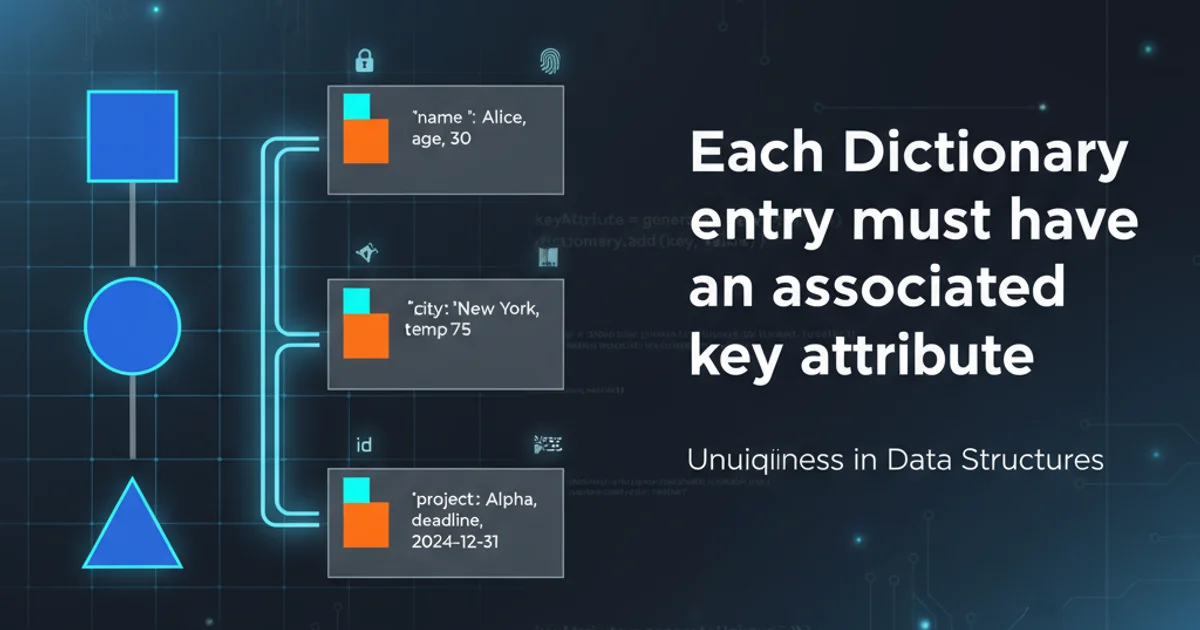Using git repository as a database backend
Categories:
Leveraging Git as a Database Backend: A Practical Guide

Explore the unconventional yet powerful approach of using Git repositories for data storage, versioning, and collaboration. Understand its benefits, limitations, and ideal use cases.
In the realm of data management, traditional relational and NoSQL databases reign supreme. However, for specific use cases, the distributed version control system Git can serve as a surprisingly effective and robust backend for data storage. This article delves into the concept of using Git as a database, exploring its advantages, challenges, and practical applications. We'll cover how Git's inherent versioning, branching, and distributed nature can be leveraged to manage data, especially for document-oriented or configuration-heavy applications.
Why Consider Git as a Database?
Git, at its core, is designed to track changes to files over time. This fundamental capability, when applied to data files (e.g., JSON, YAML, Markdown), transforms it into a powerful data management tool. The benefits extend beyond simple file storage, offering features that traditional databases might struggle with or require complex setups to achieve.
Key advantages include:
- Versioning and History: Every change to your data is tracked, allowing you to revert to any previous state, inspect historical data, and understand who made what changes when.
- Decentralization and Distribution: Data can be easily replicated across multiple machines, providing inherent backup and disaster recovery capabilities. Each clone of the repository is a full copy of the data and its history.
- Collaboration and Workflow: Git's branching and merging model facilitates collaborative data editing, enabling multiple users to work on different parts of the data concurrently and resolve conflicts.
- Auditability: The commit history provides a clear, immutable audit trail of all data modifications.
- Simplicity for Certain Data Types: For document-oriented data, configurations, or content, storing files directly in Git can be simpler than setting up and managing a full-fledged database.
- No Dedicated Database Server: Reduces operational overhead and infrastructure costs, especially for smaller projects or static content.
flowchart TD
A[Application] --> B{Read/Write Data}
B --> C[Local Git Repository]
C --> D{Commit Changes}
D --> E[Remote Git Repository]
E -- Pull/Push --> F[Other Applications/Users]
subgraph Git Workflow
C -- Version Control --> G[Data History]
E -- Replication --> H[Distributed Copies]
endConceptual flow of using Git as a data backend.
Limitations and When Not to Use Git
While Git offers compelling advantages, it's crucial to understand its limitations. Git is not a replacement for traditional databases in all scenarios. It lacks many features that are standard in relational or NoSQL databases, making it unsuitable for high-transaction, high-concurrency, or complex query workloads.
Consider these limitations:
- Querying Capabilities: Git is not designed for complex queries, joins, or indexing. Retrieving specific data often involves reading entire files and parsing them.
- Performance for Large Datasets: Storing very large binary files or frequently changing large text files can lead to repository bloat and slow operations.
- Concurrency Control: While Git handles merges, real-time concurrent writes to the same file can lead to merge conflicts that require manual resolution, unlike database systems with sophisticated locking mechanisms.
- Data Integrity and Schema Enforcement: Git does not enforce data types, relationships, or schema validation inherently. This must be handled at the application layer.
- Binary Data Handling: While Git can store binary files, it's not optimized for them. Each change to a binary file stores a new version, leading to significant repository size increases.
- Scalability: Scaling reads can be done by cloning the repository, but scaling writes across many concurrent users can be challenging due to potential merge conflicts.
Practical Implementation: Storing and Managing Data
Implementing Git as a database backend typically involves storing data as structured text files (e.g., JSON, YAML, Markdown, XML) within a Git repository. Your application interacts with these files directly, reading them into memory, modifying them, and then committing the changes back to the repository.
Here's a basic workflow:
- Initialize a Git repository: This will be your 'database'.
- Define data structure: Decide on a file format (e.g., one JSON file per record, or a single YAML file for configurations).
- Application interaction:
- Read: Clone the repository, read the relevant data files.
- Modify: Update the data files programmatically.
- Write: Stage the changes (
git add), commit them (git commit), and push to a remote repository (git push).
Let's consider a simple example of managing application configurations using Git.
# config/app_settings.yaml
app_name: "My Git-Backed App"
environment: "production"
database:
host: "localhost"
port: 5432
user: "admin"
features:
new_dashboard: true
email_notifications: false
# Initialize a new Git repository
git init
# Create and add the configuration file
mkdir config
# (Paste the YAML content into config/app_settings.yaml)
git add config/app_settings.yaml
git commit -m "Initial application configuration"
# Simulate a change
# (Modify 'email_notifications' to true in config/app_settings.yaml)
git add config/app_settings.yaml
git commit -m "Enable email notifications feature"
# View history
git log --oneline
For more advanced scenarios, you might use Git hooks to trigger actions on commits (e.g., deploy updated configurations) or integrate with CI/CD pipelines. Libraries exist in various programming languages to simplify Git interactions, allowing you to treat the repository more like a programmatic data store.